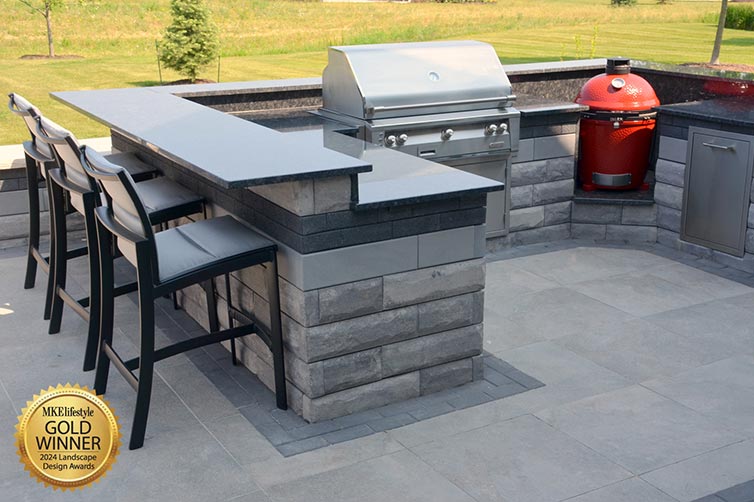Latest Stories
Subscribe to Our Blog
Get landscaping tips delivered right to your inbox.
"*" indicates required fields
How to Minimize Turf Damage in Summer

The summer heat gives lawns a burn,
With the dry earth wilting lawns in turn,
Gardens need water to keep them green
But sometimes it just can’t be seen,
It’s hard to keep these yards alive
When scorching temperatures continue to drive
We try to water and feed the grass
But all that we do, this turf won’t pass
When it’s hot, and drought puts us at odds
We’ll never be able to mend these summer turf gods
Let’s face it: Wisconsin’s mid-summer lawns tend to get crispy and go dormant.
This isn’t necessarily bad for the lawn, as technically it stays alive at the crown for up to two months in dormancy. Once the late summer rains return, the crowns begin to grow new blades, and the lawn returns to its former lush, green state.
If you want to keep your lawn soft, green and growing, watering is a necessity. Whether you have an irrigation system or water by hand, there are three basic principles to follow when the summer sun begins to scorch: Keep blades long, water deep and cut less during drought conditions.
Keep blades long
Grass roots stretch as deep below as the blades grow high above. Set your mower at a height of 3-4 inches. This will help the grass develop a deeper root system that can better access moisture.
Water deep
Fewer but deeper waterings are so much better for the lawn than shorter, more frequent waterings. Not only do frequent waterings invite a host of lawn diseases, they also weaken the lawn’s ability to cope with environmental stresses. We recommend that you water your lawn 1 inch once per week early in the morning.
If you aren’t sure if you are watering enough, set a few tuna cans in the area you are watering and see if you fill the can. If puddling or run-off occurs, you can break the 1-inch watering session into two waterings.
Giving your lawn 1 inch of water will ensure a deeper distribution of soil moisture that is healthier for the plants. Providing a break between waterings also keeps unwanted diseases at bay.
Cut less
After you mow, water escapes the fresh cut at the end of the grass blades. This can set a lawn back in terms of keeping it hydrated during a drought. One way to tell if you should hold off on mowing is to do a basic step test: Walk across a part of your lawn and wait 10 seconds. If the grass hasn’t bounced back after 10 seconds, then chances are your lawn is stressed. Hold off on mowing! Also, during times of drought stress, you should hold off on fertilizer applications.



